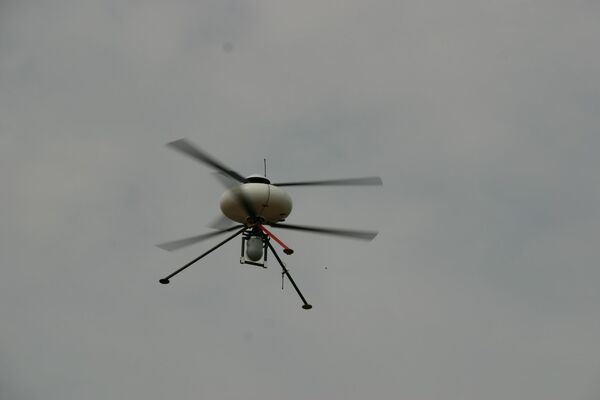MOSCOW, September 9 (RIA Novosti) – With an experimental mission aimed at testing unmanned technology in Arctic being successfully accomplished, Canada gains some weight in its claim to the North Pole.
“Experimental missions like The Canadian Armed Forces Joint Arctic Experiment (CAFJAE) are important in our quest to find new ways to meet the demands required to successfully carry out military operations in Canada’s Arctic. This experimental mission in Alert clearly demonstrates the potential opportunities and challenges that come with operating this technology. It greatly benefits not only the Canadian Armed Forces, but also our government partners in the North,” Dr. Marc Fortin, Assistant Deputy Minister, Science and Technology, Department of National Defence, said in a statement published on the website of the Canadian government.
Between August 18 and 26, Canada sent a team of scientists, technicians, and project staff from the Department of National Defence on a mission to test how unmanned technology performs in Arctic conditions, the first such experiment undertaken in an Arctic environment.
CAFJAE Team conducted 34 experiments at Canadian Forces Station Alert, using two unmanned ground vehicles and one unmanned air vehicle, to address some of the challenges the Canadian Armed Forces may face when operating in the severe Arctic conditions.
“The project team deployed vehicles into situations that might be dangerous or difficult for a Canadian Armed Forces responder at a remote location to support search-and-rescue and hazardous-material operations,” Newsweek quoted Simon Monckton, the mission’s lead scientist, as saying. “Unmanned system offer many potential benefits to the Canadian Armed Forces, but we must carefully study the strengths and weaknesses of these technologies before moving forward.”
This step marks the Canadian build-up in Arctic in the course of the new wave of tensions between the so-called Arctic powers, following Canada’s submission December 2013 of a partial application to the UN to extend its nautical borders to include the North Pole. In response, Russia, Norway and Denmark filed same claims.
It has yet to be determined whether Canada has plans to go further and weaponize its Arctic drones. Nevertheless, the drone experimentation ensures its ability to function in Arctic conditions, which goes in line with the Canadian policy in the region. As Prime Minister Stephen Harper mentioned in his Twitter August 29, “Canada’s Arctic is unequivocally Canadian sovereign territory; we proudly and strongly support it.”
Under international law, no country currently owns the North Pole and the region of the Arctic Ocean surrounding it. The Arctic’s five surrounding countries (Canada, Russia, the US, Norway and Denmark) own the area of 200 nautical miles out from their respective northern coasts. The region has always been subject to international disputes, as its sea floor is thought to contain nearly a quarter of the world’s undiscovered energy resources.




